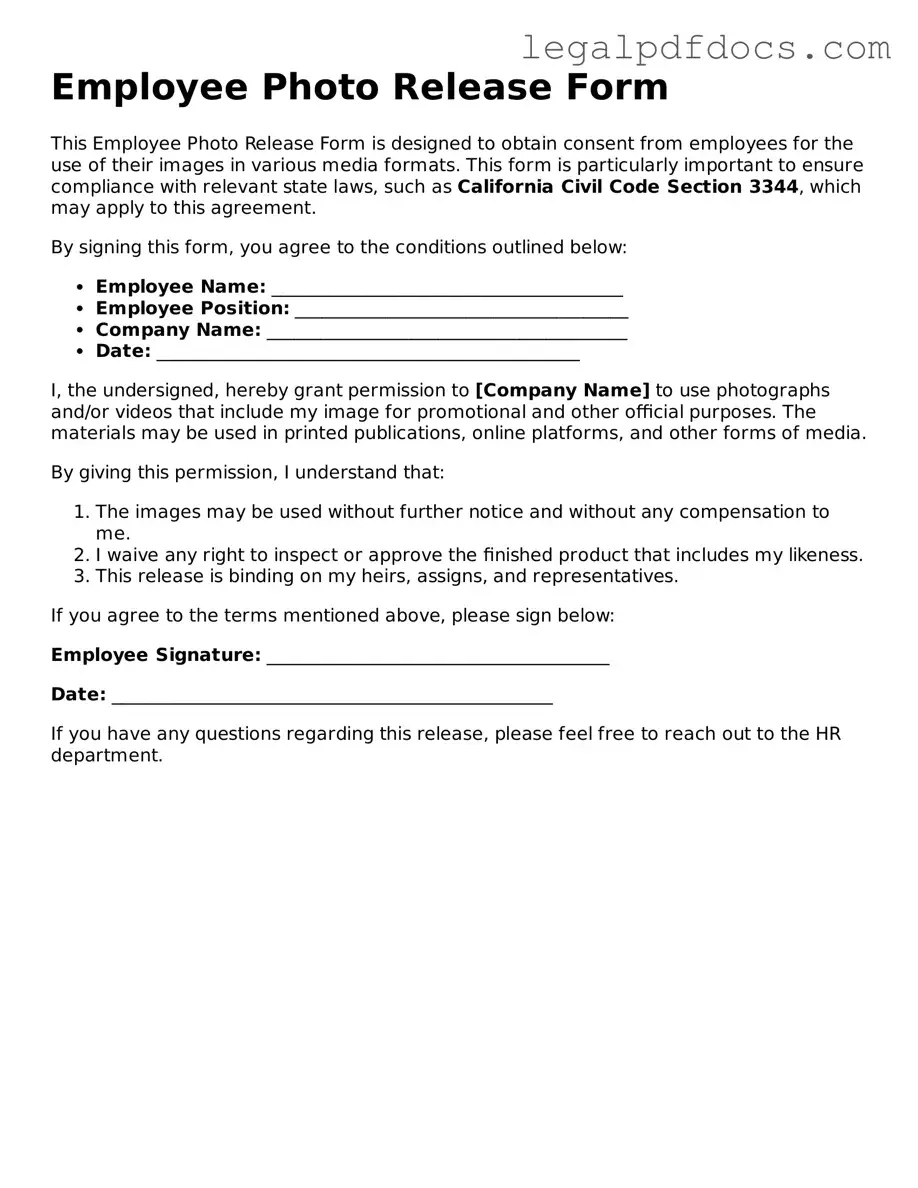Employee Photo Release Template
An Employee Photo Release form is a legal document that grants permission for an employer to use an employee's image for various purposes, such as marketing or promotional materials. This form protects both the employer and the employee by clearly outlining the terms of use for the photographs. To ensure your rights and interests are safeguarded, consider filling out the form by clicking the button below.
Open Employee Photo Release Editor Here
